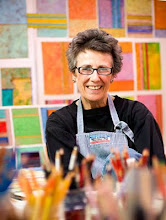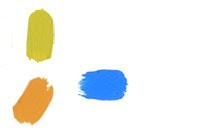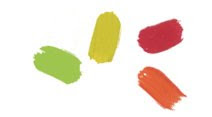I got some comeuppance recently when a friend handed me a copy of a statement about my work that I had written more than twenty years ago. I expected to find it wanting. After all, I am older and wiser now. I would like to think I can do everything better now. But no, I liked it. It wasn’t bad at all. I could use it now with minimal revision. There was a photo of a much younger me in a newspaper clipping along with the statement. No way do I look better now.
I discuss this experience of aging with my peers and usually get an upbeat or at least a serene acceptance of reality as a response. Does anything get better as we grow older? Well, for one thing, I am more accepting of my own foibles. I figure that I’ve gotten away with being who I am for all these years, no need to fret over making improvements now. Am I a better painter? Well, I certainly know a lot more about making a painting look as I want it to. I remind my self of Titian and my old friend Richard, painting with power almost twenty years beyond the age I am at now.
I have just finished selecting slides to do a presentation and talk as part of a series of six artists doing the same. I will be the last. It was clear that there was development and learning and major advances in each of the retrospective slide shows already presented. What I see as I look at my own selection of images, past and current, is that there is a coolness now that wasn’t present when I was younger. A clarity and definition that wasn’t there before. The earliest work looks a little vague. Then it becomes very much alive and a little out of control. Kind of impassioned and unstructured. Maybe a little confused but quite vital. And coming to the present a richness and serenity set in.
I no longer struggle with a painting. The enjoyment of the process is greater. I know what I want and how to go for it. I am closer to the unattainable perfection I want and happy not to reach it. The work parallels the life. So alright, old age ain’t so bad. What I saw when I looked at those early paintings was that, yes, I can do better now.
The image above is Valentine, ©1987, acrylic and pastel on etching paper, 48” x 60”.
















